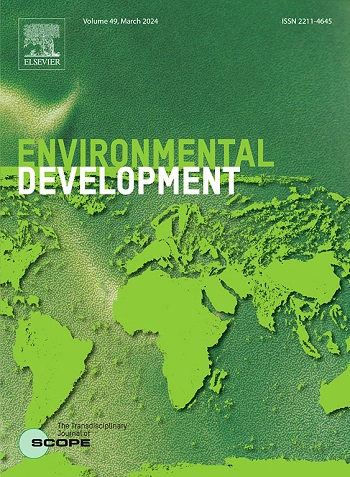评价生物多样性森林中铁矿石开采的影响和可持续性的改进半定量框架
IF 5.3
2区 环境科学与生态学
Q2 ENVIRONMENTAL SCIENCES
引用次数: 0
摘要
在生物多样性丰富的森林地区采矿是经济发展和生态完整性之间的复杂权衡。本研究使用综合框架评估了印度东部一个主要铁矿的可持续性,该框架结合了改进的Folchi(2003)影响矩阵和Phillips(2010)可持续性评分方法。提出的方法有三个关键创新:(1)纳入森林特定指标,如生物多样性敏感性、生态系统服务、废物和基础设施压力;(2)使用符号影响评分来明确区分可持续发展各组成部分的积极和消极影响;(3)应用模糊相似度聚合法对20位领域专家的输入进行加权,降低专家判断的不确定性。结果表明:由于土地资源改变、生态干扰和车辆活动的影响,土地利用(62.50分)、动植物资源利用(54.14分)、生物多样性(51.05分)和空气质量(38.67分)出现了明显的环境退化。相反,经济(- 78.29分)、民生(- 40.90分)、社会发展(- 33.45分)等领域的积极贡献较大,主要是因为创造就业机会和基础设施建设。尽管该矿采取了环保措施,但总体可持续性得分(S = 0.204)将其列为“非常差”,这表明环境成本目前超过了社会经济效益。该研究为森林矿区的可持续性评估提供了一种更加可靠、透明和环境敏感的方法。它强调需要更严格的环境保障措施,以平衡发展与生物多样性和生态系统的完整性。本文章由计算机程序翻译,如有差异,请以英文原文为准。
A modified semi-quantitative framework for assessing the impacts and sustainability of iron ore mining in a biodiverse forest
Mining in biodiversity-rich forest regions presents complex trade-offs between economic development and ecological integrity. This study assesses the sustainability of a major iron ore mine in eastern India using an integrated framework that combines a modified Folchi (2003) impact matrix with Phillips's (2010) sustainability scoring method. Three key innovations distinguish the proposed approach: (1) incorporation of forest-specific indicators such as biodiversity sensitivity, ecosystem services, and waste and infrastructure pressures; (2) use of signed impact scores to explicitly distinguish positive and negative effects across sustainability components; and (3) application of fuzzy similarity aggregation to reduce uncertainty in expert judgment by weighting inputs from 20 domain experts.
Results show pronounced environmental degradation, with high negative scores in use of territory (62.50), flora and fauna (54.14), biodiversity (51.05), and air quality (38.67), primarily driven by land resource alteration, ecological disturbance, and vehicular activity. In contrast, strong positive contributions were found in the economy (−78.29), livelihood (−40.90), and social development (−33.45), mainly due to employment generation and infrastructure development. Despite the mine's environmental initiatives, the overall sustainability score (S = 0.204) classifies it as ‘very poor’, indicating that environmental costs currently outweigh socio-economic benefits. The study demonstrates a more reliable, transparent, and context-sensitive approach for sustainability assessment in forested mining regions. It emphasizes the need for stricter environmental safeguards to balance development with biodiversity and ecosystem integrity.
求助全文
通过发布文献求助,成功后即可免费获取论文全文。
去求助
来源期刊

Environmental Development
Social Sciences-Geography, Planning and Development
CiteScore
8.40
自引率
1.90%
发文量
62
审稿时长
74 days
期刊介绍:
Environmental Development provides a future oriented, pro-active, authoritative source of information and learning for researchers, postgraduate students, policymakers, and managers, and bridges the gap between fundamental research and the application in management and policy practices. It stimulates the exchange and coupling of traditional scientific knowledge on the environment, with the experiential knowledge among decision makers and other stakeholders and also connects natural sciences and social and behavioral sciences. Environmental Development includes and promotes scientific work from the non-western world, and also strengthens the collaboration between the developed and developing world. Further it links environmental research to broader issues of economic and social-cultural developments, and is intended to shorten the delays between research and publication, while ensuring thorough peer review. Environmental Development also creates a forum for transnational communication, discussion and global action.
Environmental Development is open to a broad range of disciplines and authors. The journal welcomes, in particular, contributions from a younger generation of researchers, and papers expanding the frontiers of environmental sciences, pointing at new directions and innovative answers.
All submissions to Environmental Development are reviewed using the general criteria of quality, originality, precision, importance of topic and insights, clarity of exposition, which are in keeping with the journal''s aims and scope.
 求助内容:
求助内容: 应助结果提醒方式:
应助结果提醒方式:


